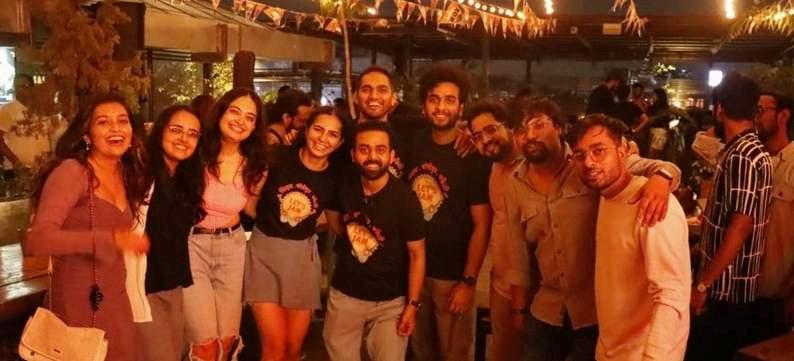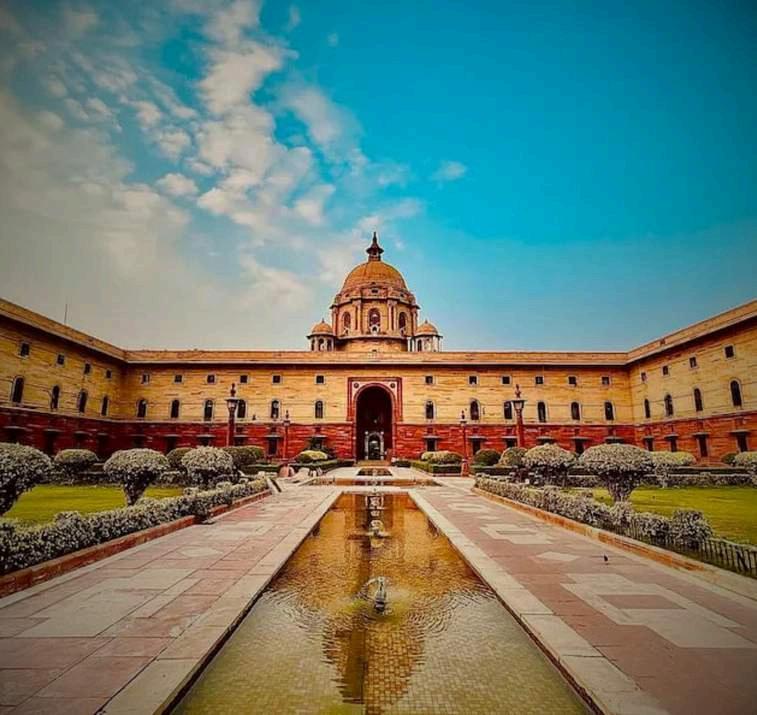
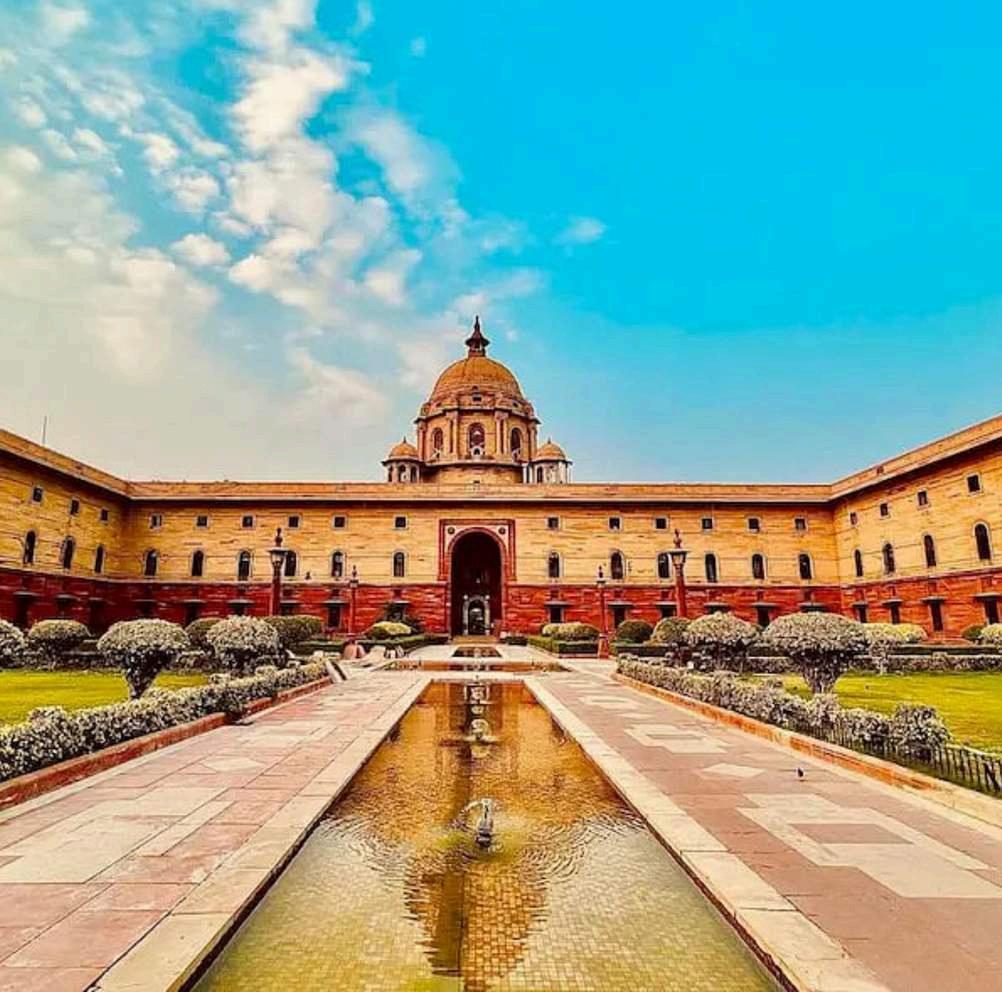






Prof.AdityaMaheshwari, IIMIndore
Prof.DebayanSarkar, IITIndore TEAM
Coordinator
DivyDhanotiya
Editors
ShivamSoni
AdityaSundwa
Communication
GyaneshwarMishra
Design
SudeekshaSuman RohanRaj
Climatechangeandthenew issueof“lossanddamage”
~SnigdhaBose Student,BangloreUniversity
~SharanyaSridhar PublicPolicyFellow,ChanakyaUniversity,Bengaluru
TheBeautyofPoetry
~KoradaPoojitha Student,IITRoorkee FreedomofCommons
~Shivamambastha Student,IIMIndore




~BhargaviSharma Student,DelhiCollegeofArts andCommerce
~RiddhiTrivedi Student,NationalForensicSciencesUniversity
~AkshayaSureshKumar Student,CentralUniversityofTamilNadu
The views expressed herein are solely those of the authorsanddonotnecessarilyrepresenttheofficialpolicy or stance of Think India and The Youth Discourse Magazine.Anycontentprovidedbyauthorsreflectstheir personal opinions and is not intended to defame or disparage any religion, ethnic group, club, organization, company,individual,orentity



Climate Impacts: Climate change severely affects health, agriculture, and water resources, especially in vulnerable regions like India
Solutions: Key actions include reducing fossil fuel use, promoting sustainable transportation, and enhancing natural carbon capture methods
Global Cooperation: Collective action, technological innovation, and international collaboration are essential to combat climate change
Climate change is a long-term change in the average weather patterns that have come to define Earth’s local, regional and global climates These changes have a broad range of observed effects that are synonymous with the term.” – NASA
We have read or heard about several effects of climate change but did anyone really give it a thought? According to the statistics, climate change is expected to have major health impacts in India- increasing malnutrition and related health disorders such as child stunting -
with the poor likely to be affected most severely Child stunting is projected to increase by 35% by 2050 compared to a scenario without climate change. Malaria and other vector-borne diseases, along with and diarrheal infections which are a major cause of child mortality, are likely to spread into areas where colder temperatures had previously limited transmission Heat waves are likely to result in a very substantial rise in mortality and death, and injuries from extreme weather events are likely to increase The Indus and the Ganges-Brahmaputra-Meghna Basins are major trans boundary rivers, and increasing demand for water is already leading to tensions among countries over water sharing. South Asia is a hotspot for the migration of people from disaster-affected or degraded areas to other national and international regions. Climate change impacts on agriculture and livelihoods can increase the number of climate refugees Another huge destruction caused by climate change is glacier melting What we know about it is, most Himalayan glaciers - where
a substantial part of the moisture is supplied by the summer monsoon - have been retreating over the past century If this continues, melting glaciers and the loss of snow will cover over the Himalayas and are expected to threaten the stability and reliability of northern India’s primarily glacier-fed rivers, particularly the Indus and the Brahmaputra at 2.5°C warming. The Ganges will be less dependent on melt water due to high annual rainfall downstream during the monsoon season.
The Indus and Brahmaputra are expected to see increased flows in spring when the snows melt, with flows reducing subsequently in late spring and summer Alterations in the flows of the Indus, Ganges, and Brahmaputra rivers could significantly impact irrigation, affecting the amount of food that can be produced in their basins as well as the livelihoods of millions of people (209 million in the Indus basin, 478 million in the Ganges basin, and 62 million in the Brahmaputra basin in the year 2005). Globally, climate change has increased the severity and the duration of wildfires by at least 30% on average over the past three decades The harm caused by extreme wildfires goes much beyond the direct loss of life Wildfire-induced air pollution, for example, is associated with 340 000 deaths every year Ecosystems, too, can be damaged by fire beyond their natural ability to restore Economic impacts may also be severe, as shown by the 2019-20 wildfires in Australia and the 2018 CampFire in the United States, which both caused over USD 20 billion in economic damages.
In recent decades, most of the world's regions have experienced long and intense droughts In Europe, the number of people affected by droughts rose by 20% between 1976 and 2006 As climate change exacerbates drought risk, global population exposure to drought is expected to increase four-fold by 2050 with its duration to double by 2100 Droughts have significant economic costs. The 2012-13 drought in the United States caused an estimated USD 140 billion in damages. In Europe, annual drought losses are expected to reach EUR 65 billion by 2100.
Overshooting 1 5°C in global warming may push the earth over several tipping points, leading to irreversible and severe changes in the climate system If triggered, tipping point impacts will rapidly cascade through socioeconomic and ecological systems, leading to severe effects on human and natural systems and imposing significant challenges for human adaptation.

As we face the challenges of climate change, remember that your voice matters, your actions count, and your dedication inspires We have the power to make a difference by advocating for environmental justice, supporting green initiatives, and fostering a culture of sustainability. The journey ahead may be daunting, but history has shown that humanity is capable of remarkable achievements when we unite for a common cause
● Ending our reliance on fossil fuels
The single-most important thing that we can do to combat climate change is to drastically
reduce our consumption of fossil fuels The burning of coal, oil, and natural gas in our buildings, industrial processes, and transportation is responsible for the vast majority of emissions that are warming the planet In addition to altering the climate, dirty energy also comes with unacceptable ecological and human health impacts. We must replace coal, oil, and gas with renewable and efficient energy sources. Thankfully, with each passing year, clean energy

is making gains as technology improves and production costs go down
● Sustainable transportation Transportation is a top source of greenhouse gases (GHG), so eliminating pollution from the billions of vehicles driving across the planet is essential to achieving net-zero global emissions by 2050, a goal laid out in the 2015 Paris climate agreement The year, 2035, is expected to mark a turning point in the adoption of EVs and in the fight against climate change as countries around the world as well as numerous automakers have announced goals to phase out gaspowered cars and light trucks This shift will also benefit our grid: EVs are like a “battery on wheels” and have the potential to supply electricity back to the network when demand
peaks, helping to prevent blackouts. It’s also critical that we consider all of the different ways we get around and build sustainability into each of them. By increasing access to public transportation such as buses, ridesharing services, subways, and streetcars as well as embracing congestion pricing, we can cut down on car trips and keep millions of tons of carbon dioxide out of the atmosphere every year And by encouraging zeroemission forms of transportation, such as walking and biking, we can reduce emissions even more. Boosting these alternate forms of transportation will require more than just talk. They require funding, planning, and the building out of supportive infrastructure by leaders across the local, state, and national levels

● Methane and its warming potential
While emissions of methane across the European Union have decreased over past years, the overall reduction in emissions has not been sufficient to offset the global increase in methane levels
● Plant native species
If you have a garden or even just a plant or two outside your home, check for native species Use a plant identification app to help And then think about replacing non-natives, especially any considered invasive. Plants, animals and insects depend on each other. Most insects will not eat non-native plants, which means birds and other species lose a food source. Biodiversity suffers. Even a single tree or shrub can offer a refuge –just remember to skip insecticides and other chemicals
● Clean up your environment
Humans, animals and plants all suffer from land and water contaminated by improperly discarded garbage Use what you need, and when you have to throw something out, dispose of it properly. Educate others to do the same, and participate in local clean-ups of parks, rivers, beaches and beyond. Every year, people throw out 2 billion tons of trash. About a third causes environment harms, from choking water supplies to poisoning soil needs to accelerate to meet 2030 and 2050 EU climate objectives Increased global efforts to reduce methane emissions would also be needed to mitigate global warming in th
● Reduce plastic
Plastic is made from oil, and the process of extracting, refining and turning oil into plastic (or even polyester, for clothing) is surprisingly Imagecourtesyo
● How is Copernicus helping?
In simple terms, photosynthesis is the process through which trees and plants capture carbon from the atmosphere and release oxygen This natural process happens to be one of the best allies and the most efficient technology to reduce the amount of carbon in the atmosphere. With the Copernicus Land Monitoring Service, we can get detailed information on what grows on the ground. Knowing where vegetated areas are and what type of vegetation is growing there is crucial for calculating net greenhouse gas emissions The CLMS has a suite of vegetation-related data products such as the High-Resolution Vegetation Productivity Parameters and its trio of high resolution forest monitoring products that provide information on living land cover and land use across Europe. This data can assist local, regional, and national


carbon-intense It doesn’t break down quickly in nature so a lot of plastic is burned, which contributes to emissions Demand for plastic is rising so quickly that creating and disposing of plastics will account for 17% of the global carbon budget by 2050 (this is the emissions count we need to stay within according to the Paris agreement).
governments in achieving their Nationally Determined Contributions
Conclusion
Loss and damage is harming and will continue to harm vulnerable communities the most, meaning that addressing the issue is an urgent matter of climate justice. Countries have struggled to reach agreement on how much money developed countries should supply to address loss and damage in developing nations, which have contributed the least to the climate crisis but are often hit hardest by its impacts Even with increased efforts by some countries, the report shows much more action is needed now to bend the world’s emissions trajectory

further downward and avoid the worst impacts of climate change.
It’s easy to feel overwhelmed, and to feel that climate change is too big to solve But we already have the answers, now it’s a question of making them happen To work, all of these solutions need strong international cooperation between governments and businesses, including the most polluting sectors Individuals can also play a part by making better choices about where they get their energy, how they travel, and what food they eat. But the best way for anyone to help stop climate change is to take collective action.


By continuing to invest in clean technologies, protect our natural resources, and collaborate on a global scale, we can create a sustainable and equitable world for future generations The path forward is clear: through determination, innovation, and cooperation, we have the power to turn the tide on climate change and build a brighter, more sustainable future for all

Urban Migration Challenges: Migration to cities offers opportunities but often leaves migrants struggling with economic and social inadequacy.
Reverse Migration Potential: Post-COVID reverse migration could revitalize rural economies by bringing talent, and entrepreneurship to rural areas
Policy Interventions Needed: Programs like Grameen Kaushal Vikas Kendras can incentivize reverse migration and support rural development
It is undeniable that there exists a tragedy of commons problem, in the context of people migrating to cities, albeit for any reason The glitz, glamour and most importantly economic opportunities of cities know no bounds In the 2011 census in India,455 million persons were migrants based on the place of their last residence; and that which constitutes about 37% of the total population of the country. Thus, the narrative around migration in India, has been quite one-sided and hard to interpret.
The surge towards cities holds promise, no doubt, but also presents challenges to the individual, the family and the society at large
While one-third of urban residents are migrants, their integration into mainstream society can be difficult A report by India Migration Now found over half of interstate migrants in major cities like Mumbai reside on the fringes, lacking access to proper infrastructure, highlighting a significant gap between existing urban amenities and the needs of a growing population. In 2020 though, the world saw profound change. With the onset of covid, people grappled for basic resources, and there was a huge shift in this migration narrative A large influx of city inhabitants returned to their homes All of a sudden, the little towns that were previously only frequented over holiday season, faced huge increase in the number of residents Young entrepreneurs, gig workers, designers, business owners, alike. In fact, statistics from the National Institute of Health show that there was a 58% return rate. In other words, there was a national movement and local impact.
Reverse migration has the potential to reshape India’s landscape With the influx of talent, work, and entrepreneurship, rural economies can be alleviated, thus contributing
Indian economy as a whole. They can also bring fresh ideas and perspectives that can improve society, thus contributing to brain gain rather than brain drain.

The success of ‘ghar wapsi’ hinges on addressing some crucial challenges Returnees often face a dearth of employment opportunities, inadequate infrastructure, and a lack of social services in rural areas. Another factor that threatens the wellbeing of returnees, is the psychological adjustment from fast paced urban life to slower rural rhythms
So, what policy interventions would help facilitate this phenomenon of reverse migration?
Drawing on the principles of incentive theory, the government can implement various programs to encourage people to return to their villages

Robust implementation of Grameen Kaushal Vikas Kendras (GKVKs) can help recognise skilling gaps, market demands, and ensure proper training is given to youth in villages, thus incentivising them to stay back It’s surprising to note here that the GoI has invested substantially in the infrastructure of these centres, but unfortunately, a lack of grassroot implementation defeats its purpose. If enough human resource was deployed to impart vocational skills that are in demand, reverse migration would be a closer reality.
A lesser spoken about policy recommendation is fostering rural entrepreneurship Rural India is known as the heart of country, rich with resources and untapped potential Introducing localised schemes providing mentorship, equity and opportunity to aspiring rural entrepreneurs, would be a game changer

Another interesting idea to explore would be offering tax breaks on investments made by returning migrants in specific sectors like infrastructure or agriculture. So developing schemes that incentivize them to send remittances back to India through favourable exchange rates or tax benefits on remitted funds used for specific purposes like education or healthcare, could also be a plausible recommendation
Considering the richness of Indian culture that’s practiced effervescently in rural places,
tapping into eco-tourism markets would enhance its visibility among urban youth. ‘Reverse cultural programs’ for instance, could be conducted in order to initiate and introduce urban residents to the beauty of Indian culture. Organizing cultural events, conferences, and mentorship programs that connect urban communities with local businesses and institutions at the Panchayat level, could also foster a sense of belonging and encourage knowledge sharing
Additionally, government-mandated rural fellowship programs could be designed to give youth a hands on experience of rural life, thus sparking in them ideas that would facilitate reverse migration.

generation in rural areas Developing reverse cultural online platforms could also be a unique, popular way to spread awareness of the importance of reverse migration Awarding successful rural entrepreneurs would also be a powerful way to give rural entrepreneurship the visibility it deserves.


https://www goodreturns in/classroom/upi-rule-change-alert-2024-key-rulechanges-related-to-upi-transactions-users-must-know-1323749 html
Considering the post covid work landscape has been hybrid, organisations could ensure rural residents could continue to work for them remotely; how far this is feasible is left to be studied This would be time-efficient t, costefficient, and most importantly, facilitate income
entrepreneurship, India can transform this challenge into an opportunity. The journey ahead is undoubtedly fraught with complexities, but the potential rewards – a more balanced and sustainable development trajectory – make it a path worth exploring. Let's do what we can to bridge the rural-urban divide and position India as a global leader in reverse migration, showcasing how this trend can create a win-win situation for both rural and urban parts of the community


Poetry as Essential: Poetry is vital for emotional expression, offering an escape from life's duties and a connection to humanity
Freedom in Expression: Poetry allows complete creative freedom, enabling individuals to explore diverse perspectives and experiences without restrictions
Healing Power: Poetry serves as a therapeutic outlet, helping people recover from life's hardships or celebrate its joys
We don’t read and write poetry because it’s cute We read and write poetry because we are members of the human race And the human race is filled with passion And medicine, law, business, engineering, these are noble pursuits and necessary to sustain life. But poetry, beauty, romance, love, these are what we stay alive for.”
These are words said by an iconic character, John Keating in the movie “Dead Poets Society” and will always be instilled in my mind for a reason The reason is simple He
proposed living for poetry and pursuing noble streams as education.
I couldn’t help but admire this dialogue from the movie so much because I could totally relate to his reason as to why we read and write poetry Poetry is something I read when I wish to know what it feels like to drench in the rain of words and emotions of another human being Some days, poetry turns out to be something I write and that is when I decide to be the cloud. It’s not always a cloud that I get to be. In my few seasons of poetry experience, I had been fire, water, a flower and even a deaf man. And that’s the beauty of it Poetry is that magical portal which makes us, members of the human race, delve into other forms of life, subconsciously Mathematicians might call this intuitive but it takes only experience for this passion to be proven
W. H. Davies, in his poem, “Leisure”, started off with a rather concerning question which
goes like, “What is this life, if full of care..”. Undoubtedly, I abide by the poet’s remark. What really is this life if we live bounded by the fences of duties and the laws of science? We can calm ourselves from our stressful days of work through poetry because paper listens I would rather say it bears It bears the ink filled with gossip It's very rare to have people around us who actually listen But really, one need not be Robert Frost to celebrate one’s feelings One can write a poem titled, “The Road Taken” instead of “The Road Not Taken” and still be thought of as someone who has felt the excitement of his soul.
physical forms and biological processes. In poetry, we can be a butterfly or a street light. Anyone can say it’s impossible and wrong to defy the laws of science, but all is fair in poetry As long as poetry illuminates our heart, we pursue it In fact, we need it At places where life needs recovery either from scars of the world’s cruelty or from the extreme happiness of the world’s humanity, poetry flows And for it to flow, there need not be any great recognitions or awards, like they have for noble pursuits. It only takes a heart full of emotions and a language to play with, for poetry to prevail.

And here we have another reason why poetry is one of the reasons we stay alive It’s free One can have their own writing style and interpretation of words. One can rhyme in any scheme they choose, or even not rhyme at all. Poetry doesn’t discriminate against anyone on any grounds, not even on the grounds of



Fiscal Consolidation Emphasis: Reduce fiscal deficit to 4 9% for debt management and economic stability
Infrastructure and Public Investment: Increased capital expenditure for infrastructure development and public investments.
Strategic Focus Areas: Nine key priorities: agriculture, employment, equitable development, MSME support, urban and energy development, R&D, and nextgeneration policy reforms
The union budget of 2024-25 is out It has 9 key priorities to generate future opportunities for all Indians
1. Agriculture
2. Employment & Skilling
3. Equitable Development of Eastern and North-Eastern part of our country
4. Manufacturing & Services, with support to MSMEs
5. Urban Development
6. Energy Security and Climate Change
7. Infrastructure development
8. Focus on innovation and R&D, with focus on space economy
9. Next generation policy reforms
Based on these priorities and the goals set by our government, I have divided my analysis of the budget into some broad categories.
With India’s inclusion in global bond indices, and with rising volatility in the market, pertaining to the recent wars and political upheaval, it is prudent for a country to have a fiscal slack Thus, the move towards balancing the needs of fiscal consolidation and equitable growth based on capital expenditure is a welcome change. Indian government has set the target to reduce the fiscal deficit to 4.9% compared to 5.6%
Here are some of the reasons why this is essential
Debt Management: High fiscal deficits lead to unsustainable debt The present case of Pakistan or the potential case of Maldives is a stark reminder on how the e economy can deteriorate if fiscal spending
is not kept in check.
Investor Confidence: Financial consolidation gives a signal to investors that the government is serious about maintaining economic stability along with growth, boosting foreign investments
Future Fiscal Space: This also gives the government slack in expenditures to deal with fluctuations in the economy due to geopolitical risks or economic downturns This slack is then used to stimulate the economy during economic distress.
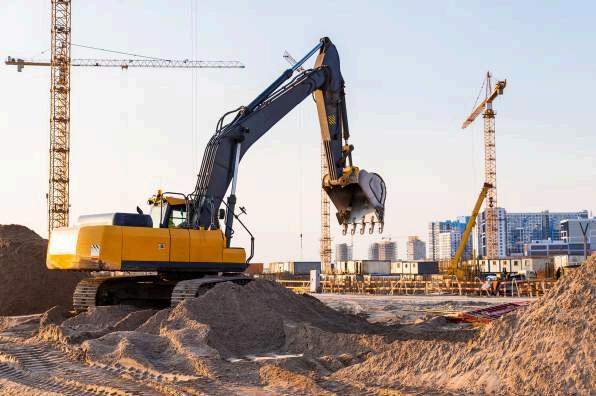
Investments in future
The budget focuses on capital expenditure to drive growth The focus on infrastructure and public investment is expected to generate a multiplier effect on the economy According to CRISIL, India's growth is projected at 6 8% for the fiscal year, lower than the previous year's 8 2%, but still above the pre-pandemic average of 6.6%.
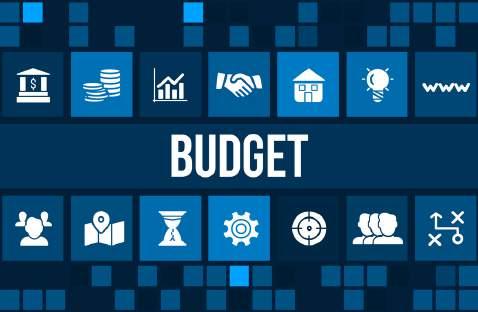
a) Increased Capex: The budget allocates ₹11.1 lakh crore for Capex, a 17.1% increase from the previous year, with significant investments in infrastructure This is expected to stimulate economic activity and create jobs Road Transportation and Highways (24 5% of capex budget), Railways (22 7%), Finance which also includes state capex loans (21 1%), Defence (15 5%) and Communications (7 7%) makes up about 91 4% of total capex budget This again emphasizes the government commitment to infrastructure development as a key driver of economic growth and job creation in our nation.
b) Private Sector Role: As the government

scales back its investment, the private sector is called upon to sustain the momentum. The Production-Linked Incentive (PLI)
scheme aims to encourage private investments, particularly in manufacturing and employment generation.

Last fiscal year, consumption was weakest in recent times owing to sluggish rural demand. Thus, some of the steps taken by our government to uplift consumption are:

a) High allocation to PM Awas Yojana-Rural and PM Gram Sadak Yojana to increase rural employment and consumption

https://swarajyamag com/infrastructure/bjps-pitch-for-eastern-
b) Purvodaya Scheme: Under this, the infrastructure and road connectivity of eastern states of Bihar, Jharkhand, West Bengal, Odisha, and Andhra Pradesh will be enhanced, giving them increased access to market, reducing transportation costs and increasing their reach to enable business to thrive and consumers to prosper
c) Changes to personal income taxation will lead to increased tax savings for lower-middle class, boosting their spending power
In conjunction with participation of private sectors, the government aims to provide skilling and employment opportunities to 4 1 crore youth, with 2 lakh crore central support over 5 years
a) Onemonth wage to new entrants in the formal workforce
b) Incentives in the manufacturing sector to employers and employees for hiring a certain number of new employees.
c) Reimbursement given to employers if they hire above a certain threshold.
d) Aninternship and skill focussed scheme to upskill potential and existing employees

BHARGAVI SHARMA SHAWARMASTUDY@GMAILCOM

https://images app goo gl/Weu8kDafANo3tSSP9
inexorable limitations as well?
Eurocentrism Critique: The article challenges Eurocentric bias, advocating for celebrating political thinkers like Chanakya in their cultural contexts
Chanakya vs Machiavelli: Comparing Chanakya to Machiavelli is seen as reductive; instead, Machiavelli could be viewed as "Italy’s Chanakya "
Cultural Integrity: Emphasizes the importance of analyzing political figures of their own cultures, rather than through biased or foreign lenses
It is quite inevitable and vital to compare political phenomenons, approaches, or even political thinkers and philosophers in the study of International Relations to inherit a legitimate understanding Before mastering a Rubix cube, one must comprehend all sides of it Likewise, the study of International Relations could turn out to be somewhat baffling if looked at from a single perspective But we must ask ourselves, to what extent is comparison justified and relevant? Are there certain situations where the process of correlating could turn out to be problematic? Could comparison hold its
Our globe, around 4.5 billion years old, is the shelter to almost 8 billion people, 195 countries and 1000+ cultures Uncountable varying socio-economic, political, demographic, geographic and historic factors operate simultaneously to uphold a particular culture Different cultures might have their similarities on the surface level, however in a much deeper sense, major gaps and polarities are bound to stem out. Stereotypically, it is agreed that Americans are Individualistic and self-reliant people, whereas in contrast to this, Japanese tend to be harmonious and maintain perseverance.
India’s better Machiavelli?
It is understandable that one would perceive a foreign belief or concept from the lens of the environment they grew up in Indians often perceive Europeans as ‘too modern’ or the inverse, where Europeans find Indians as ‘too conservative’. Nevertheless, in academics,
Western political philosophy finds its roots in Ancient Greece and the majority of political thinkers in Europe.

As a consequence, many of the global political concepts have been analysed and explored from the Western, or more particularly from the European standpoint. This Eurocentric approach of looking at the world has hampered the very spirit of International and Comparative Politics. Coming from the rich history of the Indian subcontinent, Chanakya (also named as Kautilya and Vishnu Gupta) rose to power It is estimated that Chanakya lived a cogent life between 370-283 BCE and consummated many roles and expertise He was said to be a professor of Economics and Political Science at Takshashila University, a philosopher, and royal advisor and Prime Minister to the first Mauryan emperor Chandragupta. He played a sturdy role in the growth of the largest empire of the Indian subcontinent. Influential works like Chanakya Neeti, Arthashastra- (a treatise on politics, economics, diplomacy and stagecraft) and Chanakya Sutra have been comprehended by the west as a ‘science of politics’ and ‘a guidebook for kings to rule their kingdom’ European thinker Max Weber was one of the firsts to consider that when compared to Kautilya’s Arthashastra, Machiavelli’s Prince is harmless. In Weber’s famous lecture ‘Politics as
as a Vocation’, he explained that truly radical ‘Machiavellism’ is classically expressed in the Indian literature of Arthshastra. According to the former US Secretary Henry Kissinger, Arthashastra gave the world a realist view of politics, long before Machiavelli’s Prince He defined Arthashastra as a combination of Machiavelli and Clausewitz’ work
This conceptual apparatus that frames Europe as the architect of world history and the bearer of universal values lead to supremacism and makes global violence not
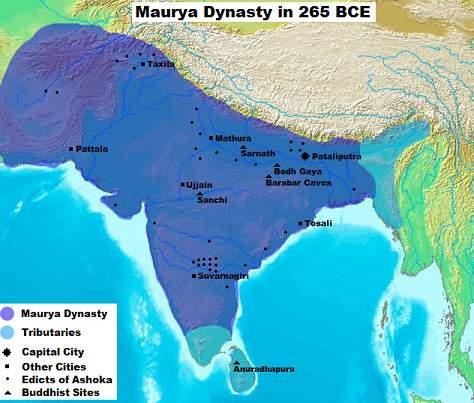
Just possible but also acceptable. To call Chanakya, India’s Machiavelli is not fair for Machiavelli, and rather insulting for Chanakya. Machiavelli lived and thrived almost 1800 years later after Chanakya The Mauryan Empire was the largest realm to flourish in the Indian subcontinent and spanned across Central and Northern India as well as covered parts of modern day’s Iran Whereas, Machiavelli’s most influential work allured readers 5 years after his demise, Chanakya Neeti- written during 300 BCE (approximately) is still keenly read globally. Forces united by Chanakya during the Mauryan era were a factor in the halt of Alexander the
Great. It seems partially fair to call Machiavelli- Italy’s Chanakya but that is bound to transform into the biasness contemporary world is attempting to run away from It is no less problematic than Eurocentrism
https://archive org/details/berkshire-encyclopedia-ofworld-history-2nd-ed /page/316/mode/1up

wwwtheyouthdiscourseorg
It seems half-witted to call Aristotle‘Sivaprasad of Greece’ or Leo Tolstoy‘Premchand of Russia’. The varying complexities of diverging cultures makes it impossible to legitimately analyse a concept from a biased lens The overall influence of Machiavelli in the 1530s Europe is unparalleled John Milton, Adam Smith, Francis Bacon- the list of intellectual minds that were inspired by him is also unending Machiavelli’s tactics are the most criticised yet the most used in today’s politics. Chanakya is a much more prominent figure in the South Eastern world whereas Machiavelli in the western. At the end of the day, both are highly skilled and influential in their respective work forces The art of comparing and contrasting is the pathway to keep the spirit of political theory alive, yet it is equally called for celebrating phenomenons and political prodigies in the limelight of their respective cultures

RIDDHITRIVEDI
RIDDHITRIVEDI138@GMAIL COM

AI-Driven Diagnostics: AI enhances precision in medical imaging, pathology, and genomics for early and accurate disease detection
Smart Implants & Surgery: AI optimizes surgeries and adaptive implants, enabling real-time adjustments and remote monitoring
Regulatory & Ethical AI: Addressing data security, bias, and regulatory frameworks is crucial for safe AI integration in medical devices
The compromise of man-made simulation into clinical devices is a basic accomplishment for the clinical consideration industry. The limit of computerized reasoning to deal with data at high rates, separate plans autonomously, and make decisions opens up gigantic horizons toward better comprehension through transport, useful streamlining at prosperity workplaces, and cost guideline attempts inside the area This paper will examine headways in man-made consciousness for clinical contraptions unbounded to yet tending to jump advances, utility, and repercussions across various arms of
clinical consideration organizations.
1.1 Diagnostic Imaging and Radiology: Among the various areas that fall under clinical imaging and radiology, man-made insight has made incredible degrees of progress The utilization of significant learning-based man-made cognizance estimations in translating clinical pictures has shown an unbelievable ability to give definite expressive results. These jump advances are expected a fundamental part in disorder early area and updating end quality.
1.2
At the present time, insight can carry out careful assessments of X-rays, CT scans, Xrays, and other clinical imaging modalities Lungs can be recognized in chest X-rays by computerized reasoning; bosom threatening development can be perceived in mammogra-
ms; and mind tumors can be spotted on X-beam assessments using man-made cognizance estimations. When in doubt, these systems match or outperform the suggestive display of talented radiologists
2.0 Radiomics:
Radiomics is a procedure that incorporates removing colossal proportions of quantitative components from clinical pictures using mimicked insight Such components could uncover plans that can’t be recognized by regular eyes in this manner supporting findings, expectations, and treatment orchestrating including sicknesses like disease.

2.1 Pathology:
Moreover, reenacted knowledge also helps an uncommon course of action in mechanized pathology The electronic pathology has significant standard pictures of slides taken by pathologists which can be analyzed by manmade knowledge to find anomalies like tissue plans, sickness cells, and other fanatical components
2.2 Histopathological Analysis:
Reproduced knowledge estimations taking care of digitized pathology slides can recognize and portray sickness cells as such diminishing the time expected for pathologists to do routine assessments and focus on extra muddled cases in light of everything
3.0 Biomarker Discovery:
Man-made intelligence could assist with finding new biomarkers by investigating huge arrangem-
ents of histopathological pictures that increase the value of customized medication.
3.1 Genomics and Proteomics

In genomics and proteomics, simulated intelligence is a distinct advantage since it empowers the examination of huge information for the distinguishing proof of quality changes, understanding protein shapes, and foreseeing sickness weakness.
3.2 Interpretation of Genetic Variants:
It can scrutinize inherited varieties from sequencing data, getting which ones are immense remedially This capacity is vital for diagnosing hereditary issues and modifying treatment as per a particular genotype
4.0 The Prediction of Drug Response:
This allows patients’; responses to prescriptions not permanently set up by taking a gander at their genomic and proteomic data as needs be engaging modified medicines that will increase sufficiency while restricting harmfulness
4.1 Accurate Oncology
AI is modifying the exactness of drug in oncology by joining information from a couple of sources, such as imaging, sub-nuclear profiles, and clinical records, to re-try illness medications for unequivocal individuals.
5.0 Treatment Recommendations:

By investigating each understanding’s obvious illness improvement profile and standing separated from colossal information bases of atment results, man-made insight, sessments can suggest customised treatment ans
change how they work in light of physiological information that is gathered continuously. Simulated intelligence-empowered pacemakers, for example, can change pacing rates in light of the patient’s level of action
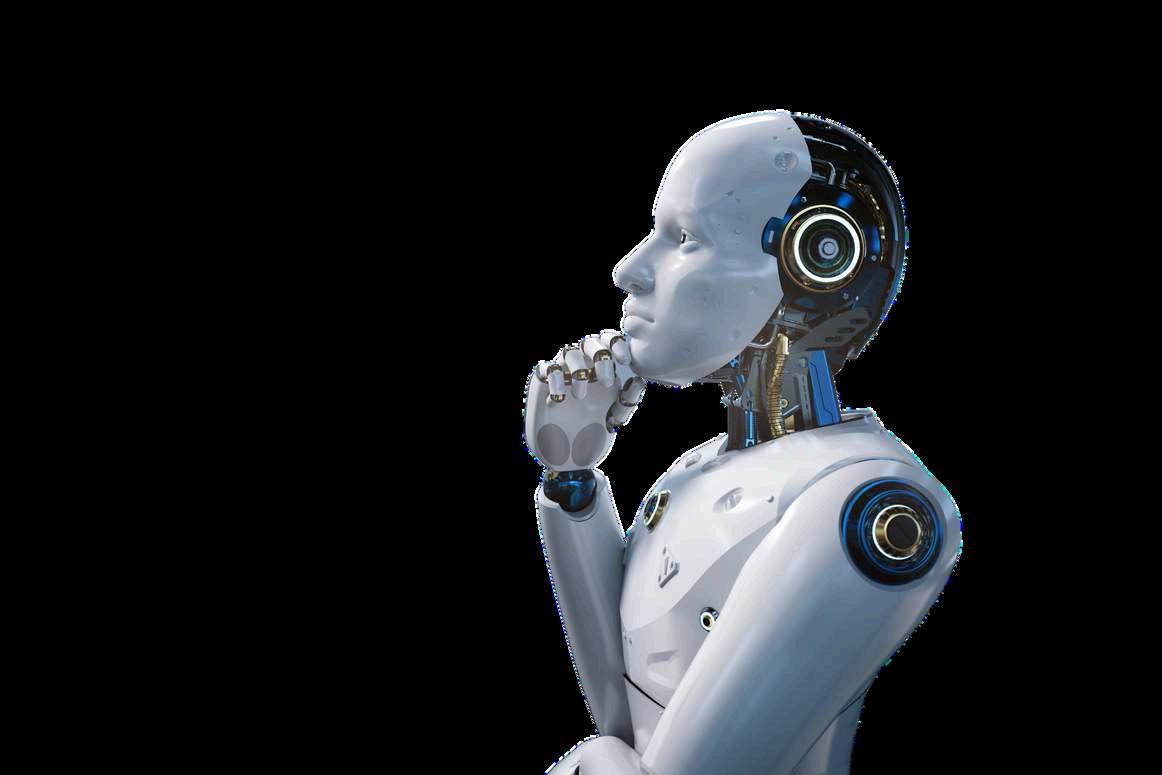
Technology driven by computers insight driven frameworks can enthusiastically treats the patients by screening how patients answer to the questions arised to them and accordingly change the procedures sensibly by creating results and less assistant effects.
6.1 Robots for Surgery
Artificial intelligence has precisely helped in the surgery with unfathomable control with multi specialist discipline accuracy and adaptability
7.0 Smart Implants:
Medical implants are also being enhanced in functionality and patient outcomes by the integration of artificial intelligence (AI) into smart implants.
7.1 Adaptive Devices:
AI intelligence can be utilized by smart implants, for example, insulin pumps and pacemakers, to
7.2 Remote Monitoring and Control:
By empowering remote observation and control of these implants, clinical experts can make changes without the requirement for intrusive methods
8.0 Workflow Optimisation with AI
Medical clinic Activities artificial intelligence smoothes out administrative work, oversees assets, and improves patient stream to upgrade medical clinic tasks
8.1 Allocating Resources:
Simulated intelligence can estimate patient affirmations and utilize accessible beds, workforce, and hardware By doing this, medical clinics are destined to be more prepared to oversee emergencies and patient floods.
8.2 Workflow Automation:
Simulated intelligence can be utilized to robotize managerial activities like planning, charging, and documentation, which would ease up the work and limit errors for medical services staff
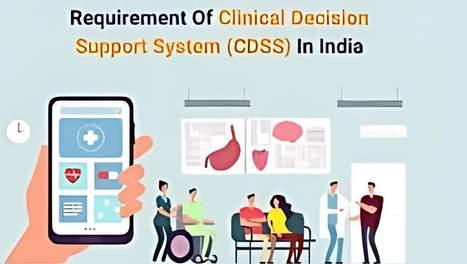
8.3 Clinical Guidance Support
Medical services experts are acquiring significant bits of knowledge to upgrade patient consideration utilizing simulated intelligence-based clinical choice emotionally
supportive networks (CDSS).
9.0 Evidence-Based Recommendations:
CDSS can investigate a sizable volume of patient information and clinical writing to create proof-based treatment and diagnosis proposals This guides in direction and keeps clinical experts side by side with recent developments
9.1 Predictive analytics for patient outcomes:
Simulated intelligence can gauge things like the course of a disease, how well a patient will answer treatment, and whether issues might emerge. This is finished by assessing patient information. This makes proactive administration conceivable and upgrades patient outcomes.
10.0 Regulatory and Ethical Considerations
To protect patient safety and trust, ethical and legal issues related to the integration of AI into medical devices must be resolved

10.1 Security and Privacy of Data
To stop breaks and abuse, the tremendous volumes of private health information that simulated intelligence frameworks use should be protected
10.2 Data Encryption and Anonymization:
To protect patient information, solid encryption and anonymization strategies should be set up
To protect client protection, AI intelligence frameworks need to maintain regulations like GDPR and HIPAA.
10.3 Consent and Transparency:
Patients should give their assent in the wake of being told about the planned utilization of their information To cultivate certainty and empower the reviewing of dynamic techniques, artificial intelligence calculations should be transparent
10.4 Fairness and Bias
Simulated intelligence frameworks should be made with minimal measure of bias and reasonableness as a primary concern while giving medical care
10.5 Diverse Training Data:
Ensuring AI intelligence frameworks are prepared on an assortment of datasets can assist with reducing inclination and increment its generalizability to a more extensive scope of individuals.
11.0 Regulatory Acceptance
The FDA and other administrative offices are making structures to survey and support clinical gadgets that utilization artificial intelligence
11.1 Strict Testing and Validation:
To demonstrate the safety and viability of simulated intelligence frameworks, they should go through a severe testing and approval process. To ensure they fill in as planned, this incorporates proof from the real world and clinical preliminaries.

11.2 Post-Market Surveillance:
After simulated intelligence frameworks are placed into utilization, they should be constantly checked for any issues and ensure that lawful necessities are being followed
AI intelligence in clinical gadgets has a splendid future in front of it, and innovative work is continually being finished to develop what they can do
12.0 AI that makes sense
Acquiring trust and facilitating the reception of man-made intelligence frameworks in clinical practice need to create frameworks that can give clear and justifiable clarifications for their choices.
To convey careful and individualized experiences, future man-made brainpower frameworks are likely going to utilize information from various sources, like wearable innovation, hereditary qualities, imaging, and electronic health records
12.2
The use of telemedicine has increased as a result of the COVID-19 epidemic, and artificial intelligence is significantly improving patient treatment from a distance. AI-powered solutions

can help with diagnostics, remote monitoring, and virtual consultations, facilitating greater access to healthcare
12.3 AI-Human Collaboration Teams

In the future, AI systems and medical experts will work together more frequently. AI can supplement human abilities, freeing up physicians to concentrate on difficult choices and patient connections while AI handles routine tasks and data analysis

Healthcare is being revolutionized by artificial intelligence (AI) in medical devices, which is opening up new opportunities for patient monitoring, precision surgery, personalized medicine, diagnostics, and workflow optimization. The possibilities for AI in healthcare are enormous, even if there are still many obstacles to overcome, mainly in the areas of ethics, data protection, and regulatory approval AI-powered medical devices will become more and more important as technology develops because they can improve patient outcomes, increase the effectiveness of healthcare systems, and ultimately change the face of modern medicine

Community Building: "Let's Jam" started as home jam sessions and evolved into a vibrant music community in Bengaluru, fostering collaboration and connections.
Impact: The founders prioritize creating a welcoming space for music lovers, focusing on community and shared experiences over profit.
Future Vision: The group embraces a step-by-step growth approach, cherishing memories while building a sustainable future for "Let's Jam."
ALLIACHU12@GMAILCOM
Bengaluru has opened its heart to music jamming as the new sensational trend followed by standup comedy Here is a community which is formed and followed with music - Sparsh Yadav, Abhishek Mishra, Karishma Upadhyay, and Gautam Prabhu, A group of four friends, united by their love for music, began their evening jamming sessions at home. From these intimate gatherings, they developed the idea of connecting fellow music enthusiasts in a more public setting. This marked the inception of ‘Let’s Jam’; a vibrant community dedicated to providing a welcoming space for music lovers to come together, share, and celebrate their passion for music
Abhishek and Goutam who already have a professional music background as trained percussionists and Guitarist act as the core of the community events accompanied by the vocal input from Sparsh and Karishma followed by a

group of music lovers who just consider music as Divine love with a twist of some games and fun activities related to music. From the jamming sessions in their own home now they are conducting the 9th edition of their outdoor jamming session with sponsorships The magic of ‘Let’s Jam’ lies not just in the melodies created or the skills honed, but in the cherished memories and the sense of community it fosters One of the most profound experiences is witnessing attendees return with even larger groups This subtle but powerful sign speaks volumes about their appreciation and the impact of the sessions. It’s heartening to see people collaborating, forming bonds, and enhancing their musical journeys through shared experiences facilitated by “Let’s Jam ”
Among the myriad of memories, there’s a particularly underrated yet deeply treasured
one: the times when the founders sit together, reminiscing about the inception of ‘Let’s Jam’ ; The initial brainstorming sessions, the excitement, and the dreams shared during those early days are some of my most cherished moments Even now, whenever they gather, these sessions are a testament to the journey they’ve undertaken together, marking them as some of the best memories “Keeping the profit and success aside, what we feel the best is when people come and say that because of Let’s Jam, they met someone and now they are collaborators and they are forming a band. We feel very satisfied because we, let’s jam, became the reason behind them; that is something we cannot explain in words.”Sparsh explained his biggest motive behind the community Currently, there isn’t a singular, defined dream for ‘Let’s Jam’ Instead, the focus is on taking “baby steps” one at a time, ensuring steady progress and growth This approach embodies the philosophy of enjoying the journey, valuing each milestone, and building on the momentum they have gathered. It’s about creating a sustainable future, step by step, while staying true to the essence of what makes ‘Let’s Jam’ special.
We are in a comfortable place, and I think everybody should hold on to their interests or passions to have balance in life If you are enjoying what you’re doing, your life will be better For us, music is the best way to escape
Apart from the profit, we are enjoying this, and day by day, we’re making a lot of connections,” says Sparsh.
As Let’s Jam continues to grow, the blend of cherished memories and evolving dreams fuels its journey The commitment to nurturing a community where music lovers can come together, learn, and share their passion is unwavering Each step taken is a stride towards a vibrant future, one that honours the past while embracing new possibilities.
IMAGECOURTESY:AKSHAYASURESHKUMAR

In essence, Let’s Jam is more than just a series of jamming sessions; It is an example of the power of music to create lasting memories and inspire dreams As the founders and attendees continue to collaborate and grow, the journey of Let’s Jam promises to be a harmonious blend of the past, present, and future
